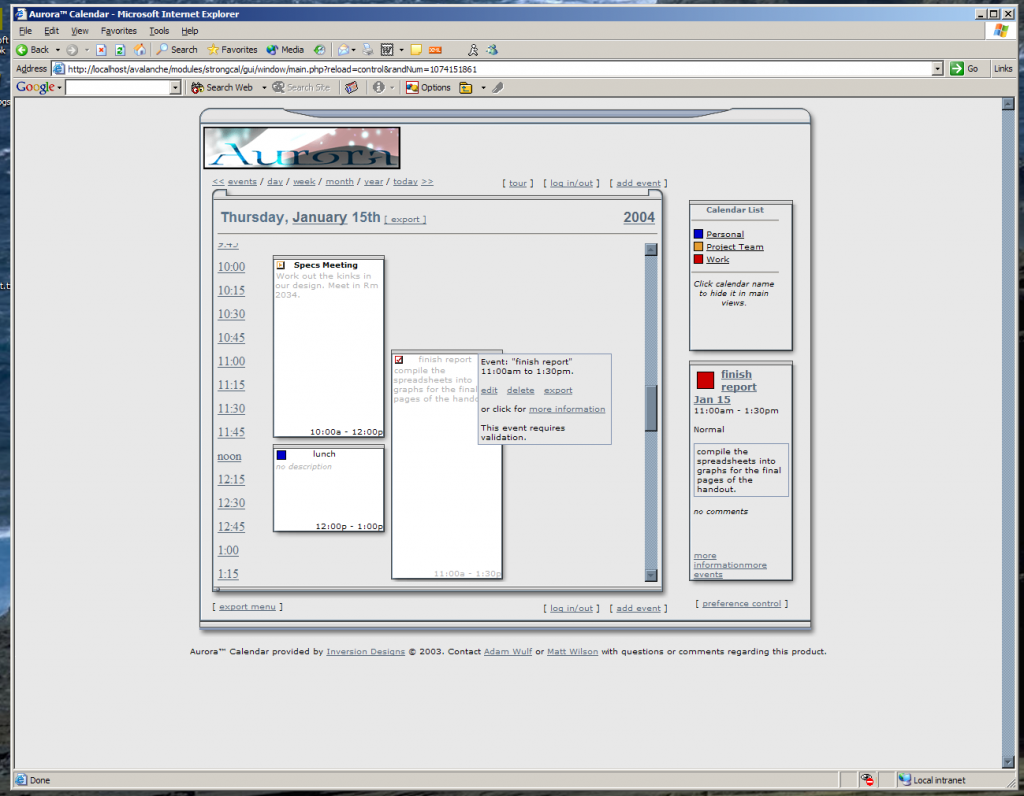I just found a screenshot of a very old version of Jotlet – then called Aurora – cerca 2001. It brings back some good memories- built my senior year of high school through freshman year of college, this was Buck‘s and my first and largest project together at the time. I’m uploading here for some grins, and so I can keep all these old images somewhere besides a random directory on my server somewhere…
Aurora – precursor to Jotlet
Everything was themeable, the entire chrome could change w/ a click of the button, and check out that amazing logo in the top right: one of Buck‘s first ever logo/headers 🙂 This version was built pre-Firebug, worked in IE6, everything was built in tables. Liberal use of iframes also going on here.
